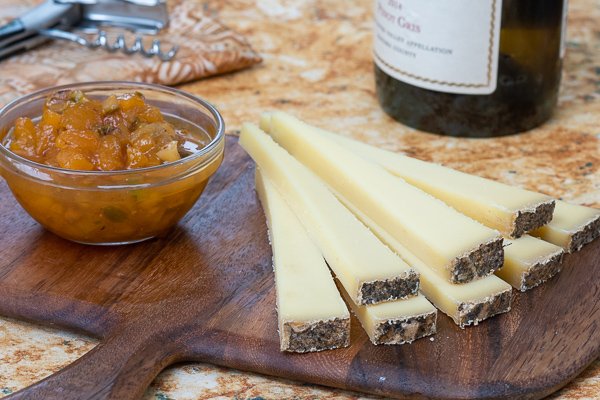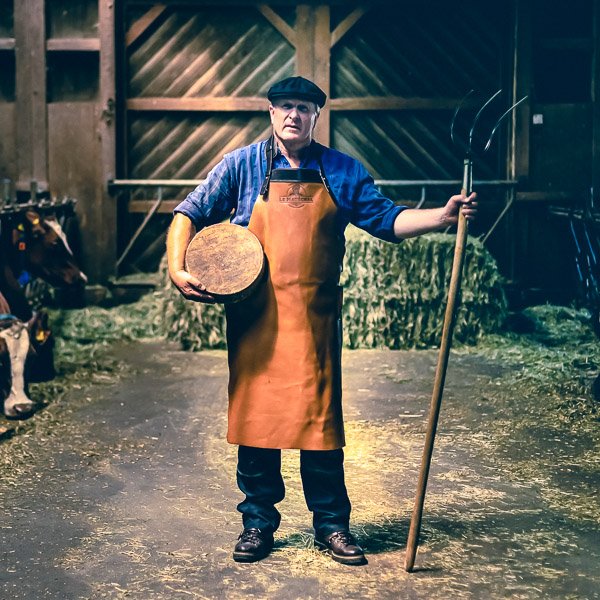Given the eye-popping prices at the cheese counter these days, the bargains stand out even more. Some (not all) of the selections selling for $35 to $40 a pound are fabulous, but none of them is better than the beauty pictured above. I paid $19.99 a pound for this charmer, a raw-milk wheel made in Switzerland by a single family with milk from their neighbors. I’ve admired this cheese for a long time, but these days I’m blown away by the astonishing quality for the price.
Le Maréchal debuted 30 years ago, the creation of a Gruyère producer who wanted to break away from that consortium and develop a cheese of his own. Jean-Michel Rapin sensed that the government program that guaranteed Gruyère prices was about to collapse, and it did, in the late 1990s. By then, Rapin had launched Le Maréchal using cow’s milk from 14 local farms. Rapin’s grandfather was a blacksmith (un maréchal ferrant) and the cheese is named in his honor.
To distinguish his cheese from Switzerland’s other firm cheeses, Rapin decided to incorporate as many traditional practices as possible—steps that others had largely abandoned. The creamery makes its own animal rennet and its own culture. The raw milk, still warm, is delivered twice a day, every day, from farms no more than 20 miles away. The milk is cultured in a copper vat—required for many Swiss cheeses—and the 15-pound wheels are aged on wooden shelves. When they are about two months old, they are coated with a proprietary mixture of dried herbs—another point of distinction. Le Maréchal is about seven months old when released.
Farm to table: Le Maréchal mik supplier
Despite these old-style methods, the creamery itself is ultra modern and no longer small. Rapin has turned the business over to his three sons, who make about 50,000 wheels a year and export a lot of them. In the U.S., Whole Foods has an exclusive on this cheese. My local Whole Foods is occasionally out of stock but it’s a year-round item for them.
And so? How does it taste? Like a bowl of French onion soup. It’s toasty, oniony, brothy, nutty—a mouthful of umami. And it would melt like a dream. Try it in fondue or a potato gratin this fall or make that French onion soup. Or just put a wedge on a board and keep cutting yourself slices until you can’t eat another bite. That’s what I do.
I prefer rich, full-bodied white wine with this style of cheese or a dry oloroso sherry. Beer lovers, choose a malt-forward style, such as a maibock or doppelbock. Malty Oktoberfest brews are in markets now and should be great with it.
“The Maréchal is simply one of the best Swiss hard cheeses,” wrote Dominik Flammer and Fabian Scheffold in Swiss Cheese, their authoritative book on the subject. I couldn’t agree more.


